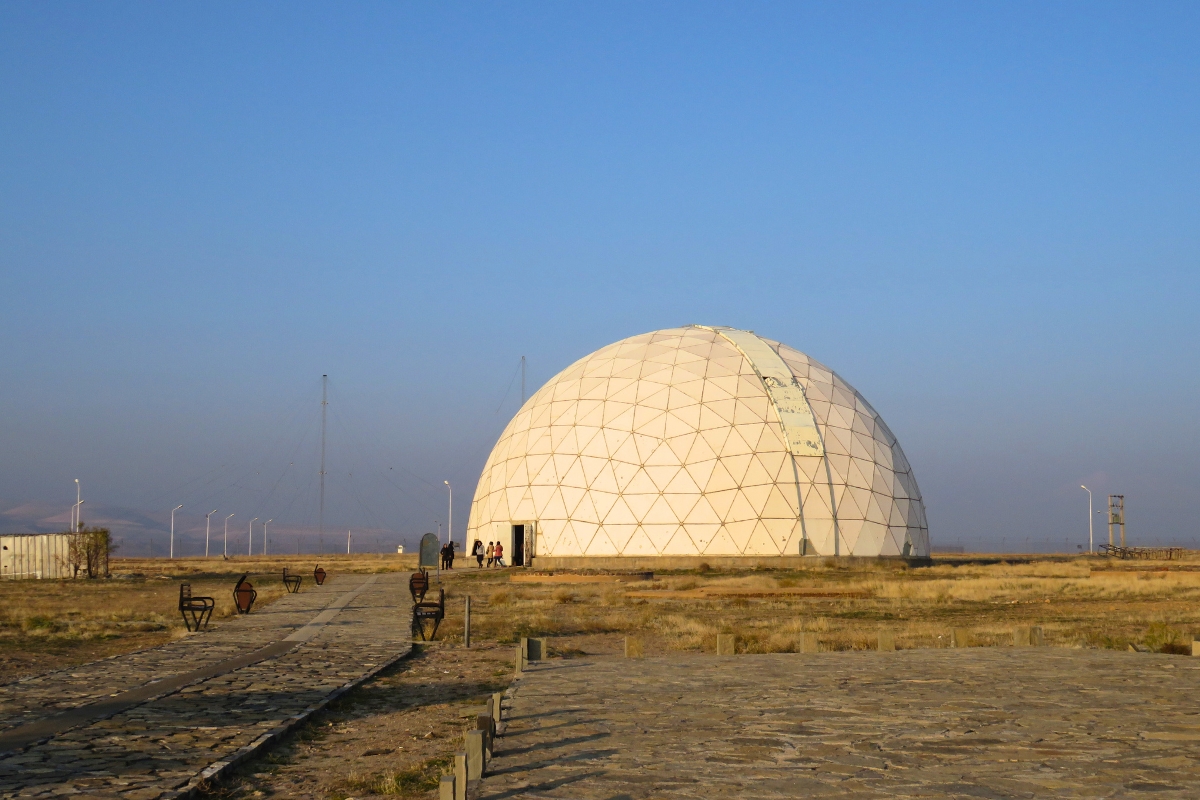- Home
- Maragheh/Maraga, Iran: Once home to Eurasia’s greatest astronomical observatory
Maragheh/Maraga, Iran: Once home to Eurasia’s greatest astronomical observatory
Even frequent visitors to Iran rarely think of visiting Maragheh, yet its tomb towers and historical observatory site retain distant resonances of a magnificent history.

Image: Wikimedia Commons
In the culturally Azerbaijani part of Iran, the city of Maragheh is a hub for the fruit-growing area that sits in the shadow of the 3710m tall Mount Sahand. Maragheh is one of those places whose historical pedigree isn’t immediately obvious to the visitor. However, dotted around the city are four impressive, if poorly maintained, tomb towers recalling the site’s period of greatness in the 12th to 14th centuries. Indeed, for a short period in the 13th century it was the capital of the Ilkhanid Empire, the originally Mongol dynasty that came to power in the wake of the great conquests of Genghis Khan. Although the original wave of Mongol invasions is quite justifiably remembered for brutality and the destruction of the order of the day, Genghis Khan’s grandson, Hulegu, oversaw a major resurgence of cultural life across a range of the arts and sciences.
The Sorkh Tower dates from 1147 AD and is considered one of the finest examples of Seljuk brickwork in Iran. Its alignment shows that local awareness of astronomy predated the Ilkhanids: the upper window hole is positioned such that sunlight shines directly onto an inner doorway during the spring equinox. Image: Wikimedia Commons
In 1256, while still consolidating control over his domains, Hulegu captured the infamous Alamut. There are many myths surrounding the castle, including one in which its leader’s followers, known as ‘Assassins,’ were fed hashish and offered the promise of paradise in return for committing daring acts of sabotage and political murder. That story has been much embellished over the centuries by poets including Omar Khayyam and Edward Fitzgerald. However, one importantly reliable fact is that when Hulegu took the castle, he found the brilliant polymath scholar Nasir a-Din-e Tusi (1201-1274), known as Nəsirəddin Tusi to Azerbaijanis. Some say he was there as a prisoner, others that he used the secure fortress as a safe place to study. Either way, he was one of the world’s foremost astronomers and, with Hulegu’s help and funding, on his departure from Alamut, he founded the world’s foremost medieval observatory on a hilltop above Marageh.
The Maragheh observatory site today. You’ll need a lot of imagination to work out how it once looked. Image: Itto.org
If you visit the observatory site today, it’s easy to get the wrong idea from the modern geodesic dome that you first notice there. In fact, that’s just a protective cover for what’s left of Tusi’s great institution. Frankly, that’s not a great deal—the place was more of a scientific campus than just a telescope, and the great library of over 400,000 documents is long gone. What does remain is the marking of a meridian line, which would have been a crucial part of the observatory—after all, at this stage of history, there were not the lenses nor parabolic mirrors that we associate these days with astronomical telescopes. Instead, readings had to be made using precisely built stone, wood, and metalwork, allowing careful measurements of angles. The observatory notably had a mural quadrant with a radius of about 40m, for which the meridian line would have been essential.
A mural quadrant had to be positioned directly on a meridian line to make effective measurements. Image: Wikimedia Commons
These instruments were by no means new. Indeed, the first mural sextant (built into the ground) were built at Rayy (near today’s Tehran) by Abu-Mahmud Khujandi in 994AD. Nonetheless, Tusi’s operation brought together a whole range of equipment and thus attracted astronomers from as far afield as China. Work here resulted in major improvements to the star charts of Ptolemy. Tusi developed trigonometry as a mathematical discipline and put together all this, which allowed Tusi to confirm that planets revolve around the sun. This movement away from geocentrism—the belief that the Earth is the centre of the universe—would take another 300 years to reach Europe via translations by Byzantine scribes and, eventually, the work of Copernicus.
Being within the Iranian province of East Azerbaijan, Maragheh’s historical prowess remains a particular inspiration for Azerbaijanis (who typically spell the town Marağa). Indeed, the Shamakha Astrophysical Observatory, the foremost such institution in the Azerbaijani Republic, is formally named for Tusi.
Read this next






